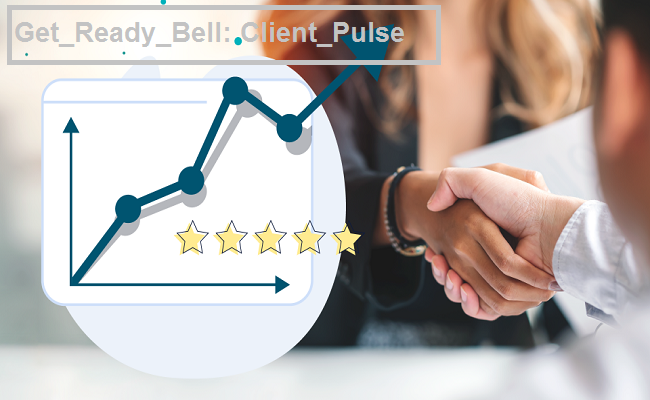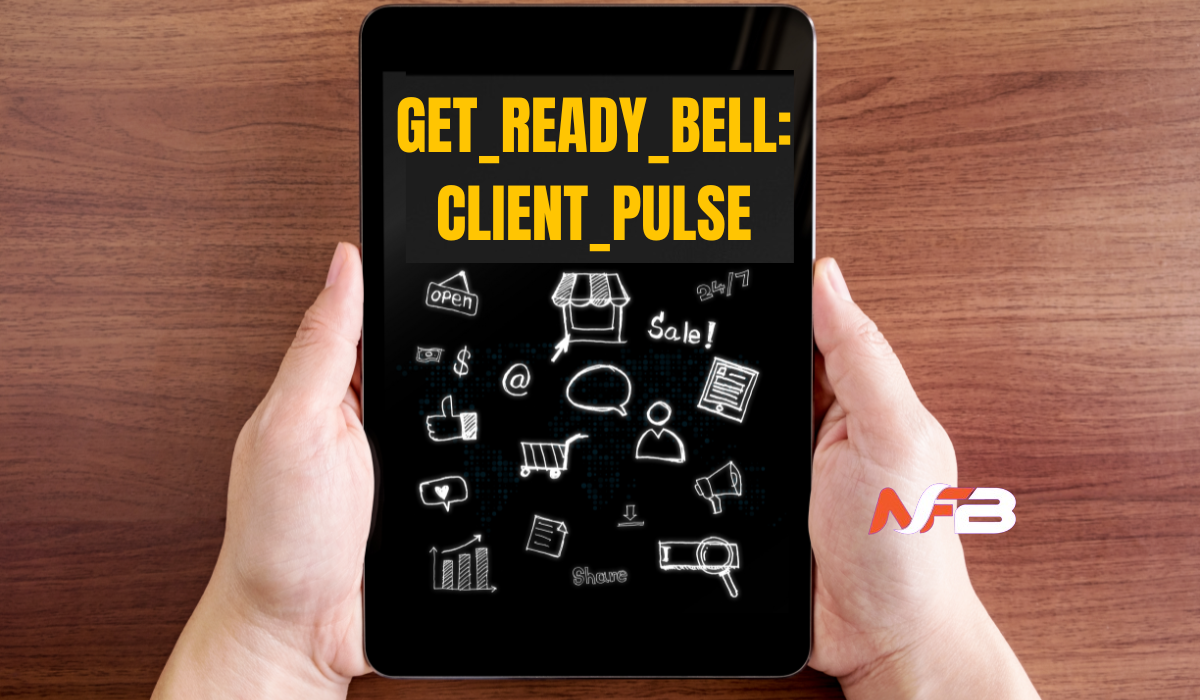In today’s fast-paced business world, keeping clients engaged and satisfied is crucial for long-term success. The “Get Ready Bell” concept is an innovative approach to client engagement, making businesses more agile and responsive. It’s all about anticipating your client’s needs and delivering outstanding results efficiently. In this article, we will dive into how Client Pulse works, the significance of client engagement, and how businesses can leverage tools to improve their relationships with clients.

Table of Contents:
- Introduction to Get Ready Bell
- The Importance of Client Pulse
- Key Strategies for Enhancing Client Engagement
- Benefits of Implementing Client Pulse Systems
- FAQ Section
1. Introduction to Get Ready Bell
The “Get Ready Bell” is a metaphorical representation of businesses being alert and prepared to meet client needs, similar to the final bell signaling readiness in competitive events. It revolves around enhancing customer service, addressing feedback quickly, and making data-driven decisions that keep clients coming back.
The concept stems from the increasing demand for businesses to adopt client-centered strategies that focus not just on providing services but on anticipating and exceeding client expectations. By employing systems that enable quick responses, businesses can improve loyalty and client satisfaction.
2. The Importance of Client Pulse
Client Pulse refers to the continuous monitoring of client satisfaction, feedback, and interactions. It provides businesses with critical insights into their client’s evolving needs, enabling proactive action rather than reactive measures.
Why is keeping an eye on the client pulse important?
- Real-time Feedback: Clients’ needs and preferences change quickly. A client pulse system captures feedback in real-time, allowing businesses to adapt instantly.
- Prevent Client Attrition: Keeping a close watch on client satisfaction levels helps to identify dissatisfied clients early and take corrective actions before they switch to competitors.
- Improved Decision Making: Businesses can make better strategic decisions based on the real-time feedback data that the client pulse system collects.
Client engagement is no longer optional – it’s essential for business success.
Table 1: Benefits of Maintaining a Client Pulse System
| Benefit | Description |
|---|---|
| Increased Loyalty | Proactive engagement keeps clients satisfied and more likely to stay. |
| Better Retention | Early identification of issues helps prevent clients from leaving. |
| Enhanced Communication | Regular check-ins and feedback collection improve overall communication. |
| Data-Driven Strategies | Data collected helps businesses adjust strategies based on client insights. |
3. Key Strategies for Enhancing Client Engagement
Client engagement involves more than just responding to emails or providing great customer service. Businesses need to adopt a strategic approach to ensure long-term engagement.

3.1 Personalized Communication
Personalization is key. Clients expect businesses to understand their needs, preferences, and pain points. Here’s how to enhance personalized communication:
- Customized emails and notifications
- Targeted offers based on purchase history or preferences
- Automated follow-up messages after client interactions
3.2 Consistent Feedback Collection
Using surveys, feedback forms, and follow-up calls, businesses can stay in tune with client satisfaction. Tools like NPS (Net Promoter Score) and CSAT (Customer Satisfaction Score) allow businesses to measure how clients feel about their services in a quantifiable way.
3.3 Offering Value Beyond Services
Clients appreciate businesses that offer value outside of their core products. This can be achieved through:
- Educational content (e.g., blogs, tutorials, and webinars)
- Exclusive offers for loyal customers
- Networking opportunities through client communities or forums
Table 2: Tools for Enhancing Client Engagement
| Tool | Purpose | Example |
|---|---|---|
| CRM Software | Manage client data, interactions, and communications | Salesforce, HubSpot, Zoho CRM |
| Survey Tools | Collect feedback and measure client satisfaction | SurveyMonkey, Google Forms, Typeform |
| Email Marketing | Personalized, automated email campaigns | MailChimp, Constant Contact |
| Chatbots | Provide real-time support and answers to client queries | Intercom, Drift, Zendesk |
4. Benefits of Implementing Client Pulse Systems
Client Pulse systems allow businesses to gather real-time insights into customer satisfaction, monitor trends, and make data-driven adjustments. Here are some significant benefits:
4.1 Better Client Retention
The primary goal of tracking client satisfaction is to improve retention. Dissatisfied clients are more likely to leave, but a pulse system allows businesses to identify dissatisfaction early on and intervene to keep the relationship intact.
4.2 Increased Revenue
Engaged clients are more likely to purchase additional services, renew contracts, and provide referrals. Businesses that monitor their client pulse consistently can capitalize on this by offering upsells and cross-sells at the right moments.
4.3 Competitive Advantage
Having a real-time understanding of what clients want gives businesses a competitive edge. They can make adjustments faster than their competitors and stay relevant to their target market’s needs.
4.4 Strengthened Relationships
Building strong, long-term relationships with clients involves trust, communication, and delivering consistently excellent results. A client pulse system helps ensure that the lines of communication remain open, fostering stronger connections.

5. FAQs
Q1: What is Client Pulse in business?
A1: Client Pulse refers to the continuous monitoring and assessment of customer satisfaction, feedback, and interactions to ensure businesses can quickly respond to evolving client needs.
Q2: How does the Get Ready Bell concept apply to businesses?
A2: The Get Ready Bell concept encourages businesses to always be prepared for client demands, just as competitors prepare for the final round in a competition. It focuses on readiness, engagement, and proactive client management.
Q3: What tools can I use to track client satisfaction?
A3: Tools like NPS (Net Promoter Score), CSAT (Customer Satisfaction Score), CRM systems, and feedback collection tools like SurveyMonkey or Google Forms can help businesses monitor client satisfaction.
Q4: Why is personalization important in client engagement?
A4: Personalization helps businesses tailor their services and communications to individual client needs, making clients feel valued and increasing the likelihood of long-term engagement.
Q5: Can small businesses benefit from Client Pulse systems?
A5: Absolutely! Client Pulse systems are scalable and can provide small businesses with critical insights, helping them to compete with larger companies by offering personalized and timely client interactions.
Table 3: Client Pulse Metrics to Track
| Metric | Description | Importance |
|---|---|---|
| Net Promoter Score (NPS) | Measures customer loyalty and the likelihood of referrals | Helps understand overall client satisfaction |
| Customer Satisfaction (CSAT) | Measures immediate satisfaction after specific interactions | Identifies areas for quick improvements |
| Customer Lifetime Value (CLV) | The total revenue a business can expect from a client | Helps tailor engagement strategies to maximize CLV |
Conclusion
Implementing the Get Ready Bell: Client Pulse approach can be the game-changer businesses need to stay ahead of their competitors. It allows for real-time feedback, faster response times, and data-driven strategies that will elevate client relationships to new levels. By following the strategies outlined in this article, businesses can foster stronger engagement, improve retention, and boost overall client satisfaction, leading to increased revenue and growth.
